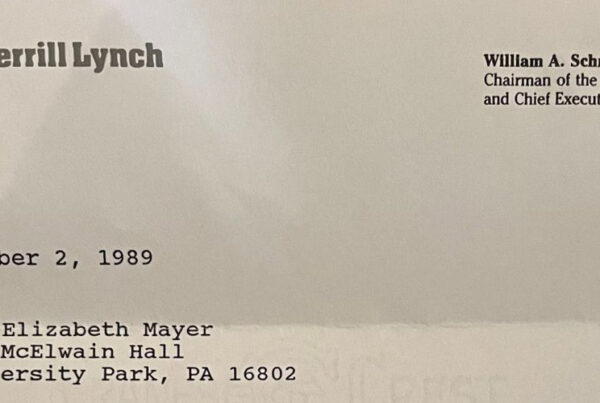
Article Summary: When you scan a resume, where do you typically start reading? Generally, it is the “Summary” section. It is the executive summary of your entire employment history boiled down into about 100 words. It is the most important aspect of your resume. Too often, people try to squeeze in too much. And they do not convey the potential value they could bring to the organization. If you are not receiving interview requests from well-matched position descriptions, it is time to revise and tweak your resume. Your summary sets the tone for what is to come. Decision makers read many resumes, sometimes hundreds, for each position. Excite them. Pique their interest. Remember, people hire potential, not resumes. What does your Summary say about you? [This article was originally written for the American Marketing Association Executive Circle]
HOW TO WRITE A SUMMARY SECTION THAT SCREAMS “SCHEDULE AN INTERVIEW WITH ME TODAY!”
Copyright © 2010. The Chief Storyteller®, LLC.
Ira J. Koretsky
September 2010
Let’s pretend you are Rebecca, the CEO of a multi-million dollar consumer products company. Oscar, your Chief Marketing Officer (CMO) of 18 years, just retired. You received three resumes today from your executive search firm.
When you scan a resume, where do you typically start reading? Generally, it is the “Summary” section. It is the executive summary of your entire employment history boiled down into about 100 words. It is the most important element of your resume.
Writing the summary is usually the most challenging part of the resume. Too often, people try to squeeze in too much. And they do not convey the potential value they could bring to the organization.
Here are three suggestions for developing a resume summary that screams, “Schedule an interview with me today!”
1. MAKE IT A POWERFUL PERSONAL ADVERTISEMENT
Think like an advertising copywriter. What are the most interesting and relevant words and phrases needed to pique Rebecca’s (your decision maker) interest? Truly, your summary should set the stage for the rest of the resume. It should contain active/action verbs and accomplishments with quantifiable benefits. Use a few well-placed key words and phrases from the position description and your individual experience. While the entire resume should be tailored to the position description, the summary has to be spot on.
2. PIQUE OUR INTEREST WITH YOUR BUSINESS STORY
Summarize with powerful phrases hinting at something much greater. Rebecca is evaluating your accomplishments as much as she is your potential. In marketing terms, this is your elevator speech or value proposition. At its core is a headline—three to seven words summarizing your potential value.
Some examples include “Building Great Brands for 25 Years,” “Growing Departments into Divisions,” and “Positioning Fortune 2000 Companies for Explosive Growth.” Your business story should represent your personal AND your professional self.
3. USE BULLETS
The typical summary section is a paragraph, spanning four and as much as 10 lines on the resume. Paragraphs are dense and impossible to read quickly. Most people scan paragraphs, especially on resumes. Instead, structure your summary to the way your reader is likely going to read your content. Use bullet statements.
Example from the Internet
The following is a real example of a summary statement from a senior executive. Let’s call the candidate, Laurie. After the paragraph, there are some introspective questions to ask of yourself you were Laurie followed by three suggestions.
Results-charged entrepreneurial career is distinguished by achievements in generating business outcomes that favorably impact bottom-line performance and increased shareholder value. Lead by example and build high performance teams by creating focus, achieving buy-in and involvement, and serving as a mentor. In-depth knowledge of the principles and methods of business administration and supervision as they relate to personnel administration, fiscal management, program development, and overall policies and practices. Strong strategy development and analytical skills; evaluate business opportunities and develop economic analysis for entry into new markets and retreat from unprofitable markets. Excellent interpersonal, communication, and presentation skills with all intermediaries – boards, partners, customers, employees, and the public. Decisive, action-oriented, and competitive.
Two questions to spur some introspective thought:
1. How would you rewrite this to tell the business story of a highly successful CMO?
2. What key elements/words would Rebecca, the CEO, want to see here?
Here are three suggestions among many to improve this summary statement.
1. Results-charged entrepreneurial career is distinguished by achievements in generating business outcomes that favorably impact bottom-line performance and increased shareholder value.
>Developed internal customer service initiative increasing retention by 16%, resulting in $3.3 million in additional profits.
2. Strong strategy development and analytical skills; evaluate business opportunities and develop economic analysis for entry into new markets and retreat from unprofitable markets.
>Turned around an underperforming product representing over 37% of current revenue. Implemented a highly targeted, year-long nation-wide sales and media campaign.
3. Excellent interpersonal, communication, and presentation skills with all intermediaries – boards, partners, customers, employees, and the public.
> Delete entire sentence. This is expected of a CMO. Only include content to help you differentiate yourself.
IT IS AN EVOLVING STORY ELEMENT
Each position is different. Each organization is different. Each hiring executive is different. Each team is different. You get the picture. As such, your resume has to be tailored to each position. And your resume is just one element of your business story (e.g., cover letter, resume, interview, accomplishments, success stories, and elevator speech). Ensure your story elements are unified with your headline and core business story (i.e., your elevator speech—your answer to “Tell me about yourself”).
If you are not receiving interview requests from well-matched position descriptions, it is time to revise and tweak your resume. Take your time. Write, rewrite, take a break, and continue. Ask for help from friends and colleagues—a fresh perspective is often helpful.
Your summary sets the tone for what is to come. Decision makers read many resumes, sometimes hundreds, for each position. Excite them. Pique their interest.
“Remember, people hire potential, not resumes.”
Eugene Finerman said, “Every word has a story…one word can tell an epoch of history, define the attitude of an era, or reflect an ancestral sense of humor” (The Toastmasters, 2003).
What does your Summary say… about you?
Photogrphy Source: DepositPhotos



